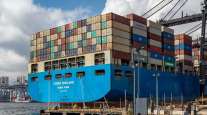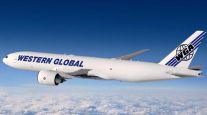Ports and Airports Continue Climb Back to Normalcy
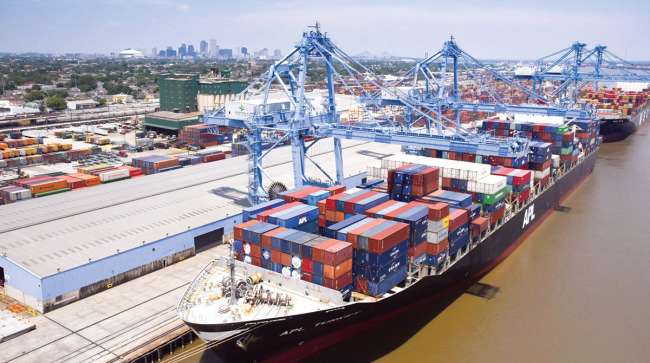
[Stay on top of transportation news: Get TTNews in your inbox.]
Ports
With a year plagued by severe weather and coronavirus recovery, ports across North America are clamoring to stay ahead of the cargo backlogs and shipments. Many ports experienced drastic changes in expected shipments as China and other major exporters continued to struggle with industrial output.
Even as most businesses recover, supply chain bottlenecks are expected to continue.
The changing demands on global shipping have caused the price of container shipping between China and the West Coast to increase by 90% compared with 2019, according to the U.S. Maritime Administration.
Port Directory
Pacific Northwest | California & Pacific Islands | North Atlantic | Mid-Atlantic & South Atlantic | Mexico & Central America | Gulf Coast | Caribbean | Great Lakes
The Port of Los Angeles and the Port of Long Beach continue to surge as they are projected to move 30% more cargo in 2021 than in 2020. The Port of Los Angeles handled more than $259 billion in trade in 2020.
For Gulf Coast ports, it has been a similar story. To add to supply chain strains, many southern ports have also been fighting extreme weather disruptions. Hurricane Ida and tropical depression Nicholas caused temporary problems for port activity. The Port of New Orleans was closed for four days after Hurricane Ida.
“The fact that our wharves and rail are busy today following a storm of this magnitude, and Entergy [Corp.] was able to restore power so quickly, is a testament to the resiliency and readiness of our gateway,” Port of New Orleans spokeswoman Jessica Ragusa said in an interview.
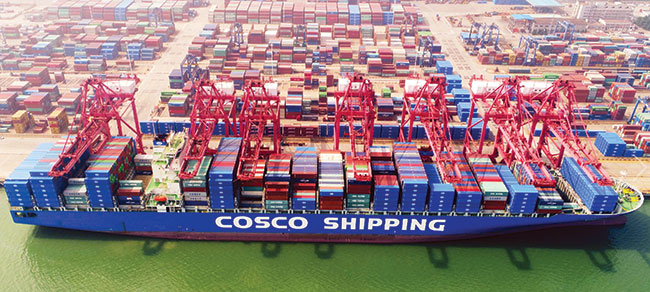
A Costco container ship in port. Cosco Shipping Group ranks No. 7 on the Transport Topics Top 50 list of global freight carriers. (Cosco Shipping)
In the last year, Latin American ports experienced a cumulative decline of 2.9% in 20-foot-equivalent trade managed, according to the Economic Commission for Latin America and the Caribbean.
The 2021 Port Infrastructure Development Program received $230 million in appropriated funds for port projects this year, with $205 million going directly to coastal or Great Lakes ports. Seattle, Norfolk, Va., Seward, Alaska, and Conneaut, Ohio, received some of the largest chunks of grant dollars in 2020.
The port directory provides a look at the largest and most predominant seaports in North America. Annual figures for U.S. ports tonnage and TEUs were collected from the U.S. Army Corps of Engineers.
Airports
Amid continuing recovery from the pandemic, disruptions at airports and warehouse facilities have dropped significantly — and at the perfect time — as freight needs erupt across the country.
Air cargo at the top five airports has seen combined growth of 6.48 million tons in the past year. According to the Airports Council International, North America is home to five of the top 10 busiest air cargo hubs in the world, with Memphis, Tenn., at No. 1.
The FedEx Express World Hub, based out of Memphis International Airport, accounted for nearly all of the 4.61 million tons of cargo that was handled in the previous year at the airport.
In Alaska, the Ted Stevens Anchorage International Airport experienced more than 24% growth in landed cargo. One of its main tenants, FedEx Express, has been upgrading its existing hub at the airport. Anchorage is the second largest cargo airport in North America, just behind Memphis.
Cargo traffic increased more than 76% at Los Angeles International, pushing it to the fourth busiest cargo airport in North America. The airport, citing industry analysis by WorldCity, said it became the leading importer of personal protective equipment such as N95 respirators and masks last year during the pandemic.
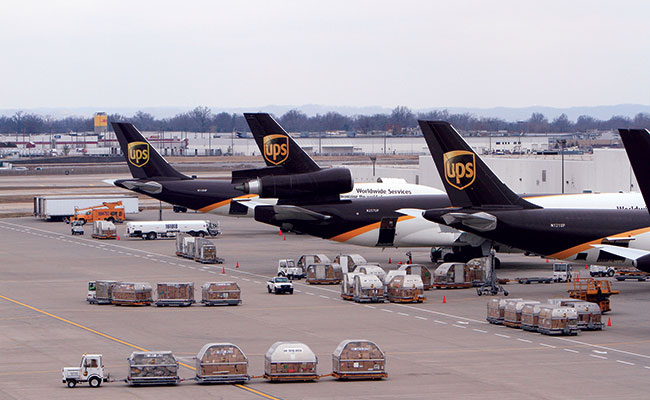
UPS airplanes line up at the UPS Worldport in Louisville, Ky. (John Sommers II for Transport Topics)
In addition to growth in cargo handled, many airports also underwent significant facilities improvements. Louisville’s Muhammad Ali Airport is in the middle of a $400 million improvement project that focuses on restructuring its space for greater efficiency. The Federal Aviation Administration awarded 60 airports more than $3.2 billion in 2021 through the Airport Improvement Program.
Increased use of airport space by Amazon Air has also boosted cargo figures. Amazon Air now has operations in more than 35 airports in the U.S., adding 10 in 2020 alone, according to Amazon.com Inc.
A notable jump at Guam International occurred in the past year, with air cargo rising 407%. According to the airport authority, an increase in mail and the transition of passenger planes being used for cargo led to the substantial growth.
Want more news? Listen to today's daily briefing below or go here for more info:



